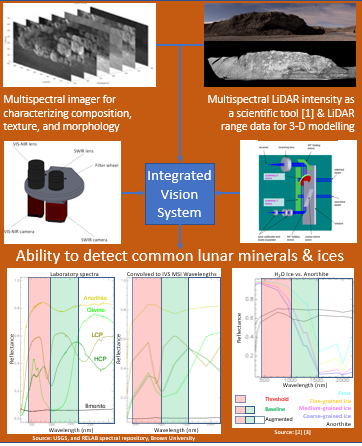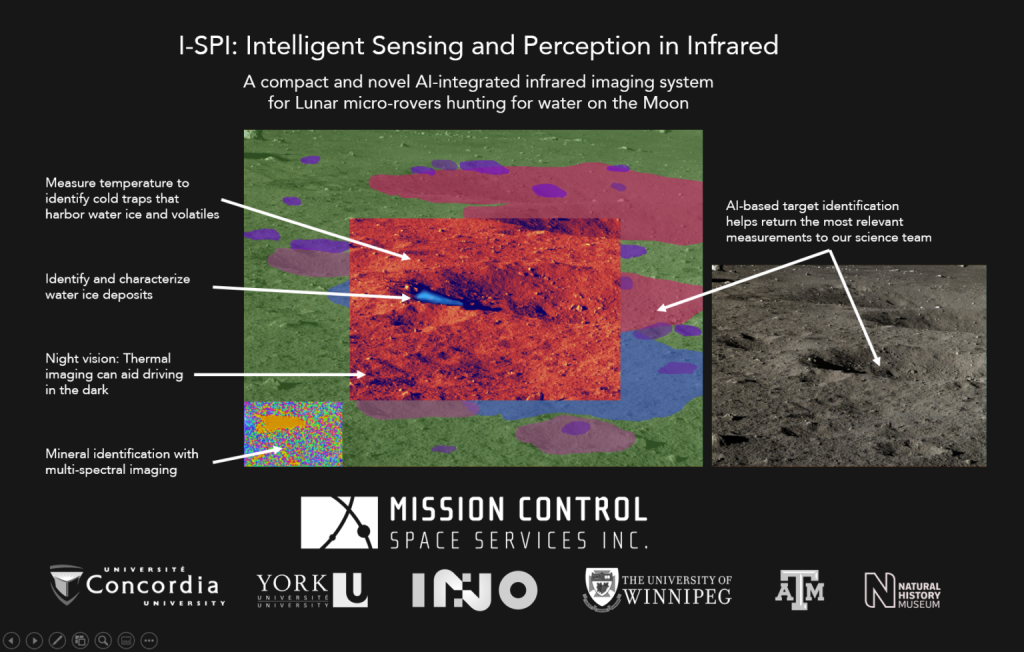Instrumentation for the Moon
A major goal of CLRN is to develop an expertise in lunar science and technology demonstrations that will enhance lunar exploration and long-term human presence on the Moon. Part of this goal incorporates the design, development, testing, and production of instrumentation that will improve the quality of life of astronauts on and around the Moon, improve in-situ analyses of rock samples, and collection of samples during Extravehicular Activities (EVA).

In Canada, the expansion of the private industry and the new dedicated federal budget towards Canada’s participation in lunar exploration announced in 2019 has led to the development of new technology demonstrations that can be applied to lunar exploration. At the Institute for Earth and Space Exploration (Western Space) at the University of Western Ontario, a team led by Dr. Gordon Osinski is collaborating with MDA to develop a prototype stand-off instrument known as the integrated vision system (IVS). The IVS concept study is a rover mast that includes a multispectral imager and a multi-wavelength LiDAR (light detection and ranging; measures height and topography). The overall goal of the IVS concept study is to support lunar surface science by generating outcrop-scale geological and terrain maps and characterize the compositional diversity of the lunar surface.
At the Mission Control Space Services mission software development company based in Ottawa, Canada, a team is working to provide new advanced AI and lunar imaging systems to contribute to lunar surface science. The team at Mission Control Space Services is motivated by key questions in lunar science to understand the nature of volatiles and the prospecting and extraction of water-ice deposits in cold traps. One of the systems being developed is the Intelligent Sensing and Perception in Infrared (I-SPI), an imaging system that will measure thermal infrared emissions in the 2.9-100 µm range for mapping lunar surface temperatures. Water-ice on the Moon requires extreme cold temperatures (<110K preferably), so an imaging system that can measure the thermal emission of the lunar surface from the eyes of a rover can significantly improve our search for water-ice deposits. The team at Mission Control Space Services is partnering with multiple teams across Canada and Europe to complete the development and testing of the I-SPI; sensor partner Institut National d’Optique (INO), Dr. Ed Cloutis (University of Winnipeg), Dr. Mike Daly (York University), Dr. Chris Skonieczny (Concordia University), Dr. Ryan Ewing (Texas A&S University), and Dr. Louisa Preston (Natural History Museum, London, UK).

